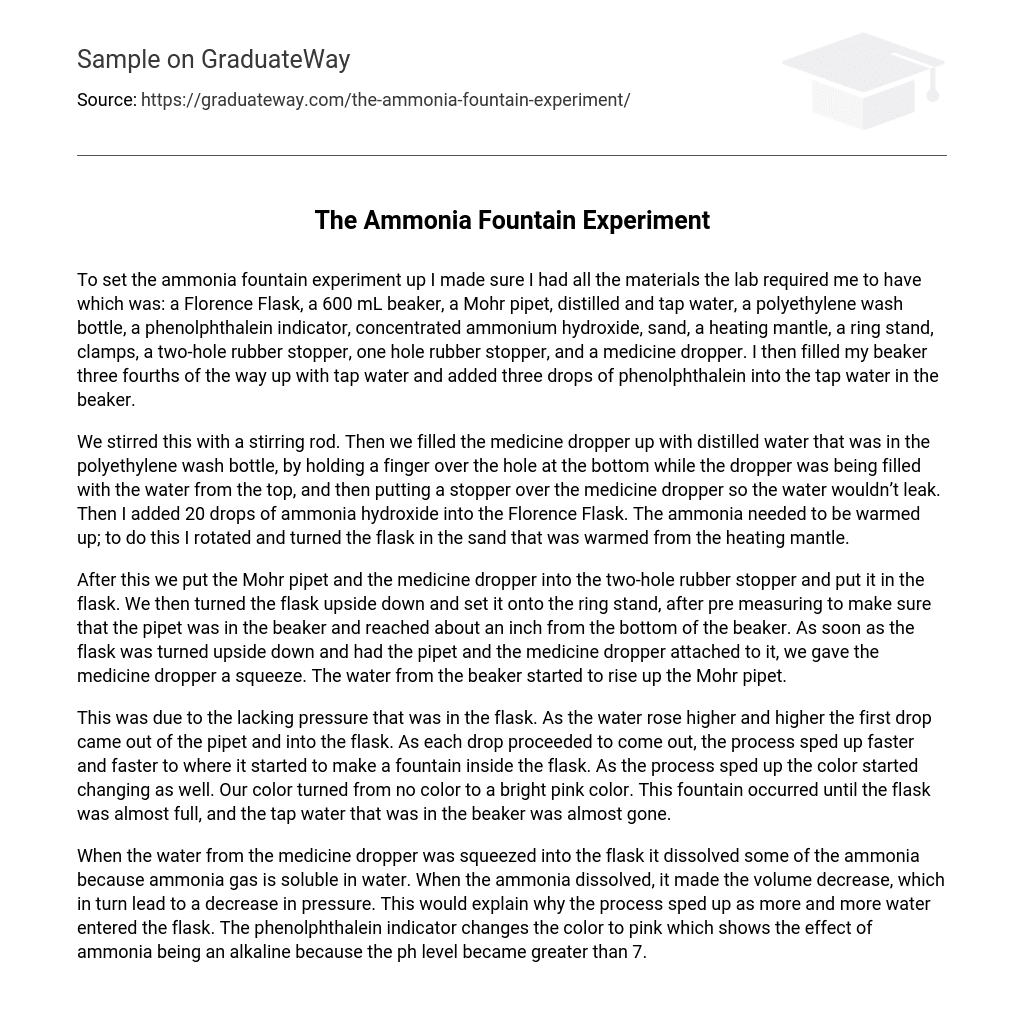To set the ammonia fountain experiment up I made sure I had all the materials the lab required me to have which was: a Florence Flask, a 600 mL beaker, a Mohr pipet, distilled and tap water, a polyethylene wash bottle, a phenolphthalein indicator, concentrated ammonium hydroxide, sand, a heating mantle, a ring stand, clamps, a two-hole rubber stopper, one hole rubber stopper, and a medicine dropper. I then filled my beaker three fourths of the way up with tap water and added three drops of phenolphthalein into the tap water in the beaker.
We stirred this with a stirring rod. Then we filled the medicine dropper up with distilled water that was in the polyethylene wash bottle, by holding a finger over the hole at the bottom while the dropper was being filled with the water from the top, and then putting a stopper over the medicine dropper so the water wouldn’t leak. Then I added 20 drops of ammonia hydroxide into the Florence Flask. The ammonia needed to be warmed up; to do this I rotated and turned the flask in the sand that was warmed from the heating mantle.
After this we put the Mohr pipet and the medicine dropper into the two-hole rubber stopper and put it in the flask. We then turned the flask upside down and set it onto the ring stand, after pre measuring to make sure that the pipet was in the beaker and reached about an inch from the bottom of the beaker. As soon as the flask was turned upside down and had the pipet and the medicine dropper attached to it, we gave the medicine dropper a squeeze. The water from the beaker started to rise up the Mohr pipet.
This was due to the lacking pressure that was in the flask. As the water rose higher and higher the first drop came out of the pipet and into the flask. As each drop proceeded to come out, the process sped up faster and faster to where it started to make a fountain inside the flask. As the process sped up the color started changing as well. Our color turned from no color to a bright pink color. This fountain occurred until the flask was almost full, and the tap water that was in the beaker was almost gone.
When the water from the medicine dropper was squeezed into the flask it dissolved some of the ammonia because ammonia gas is soluble in water. When the ammonia dissolved, it made the volume decrease, which in turn lead to a decrease in pressure. This would explain why the process sped up as more and more water entered the flask. The phenolphthalein indicator changes the color to pink which shows the effect of ammonia being an alkaline because the ph level became greater than 7.





